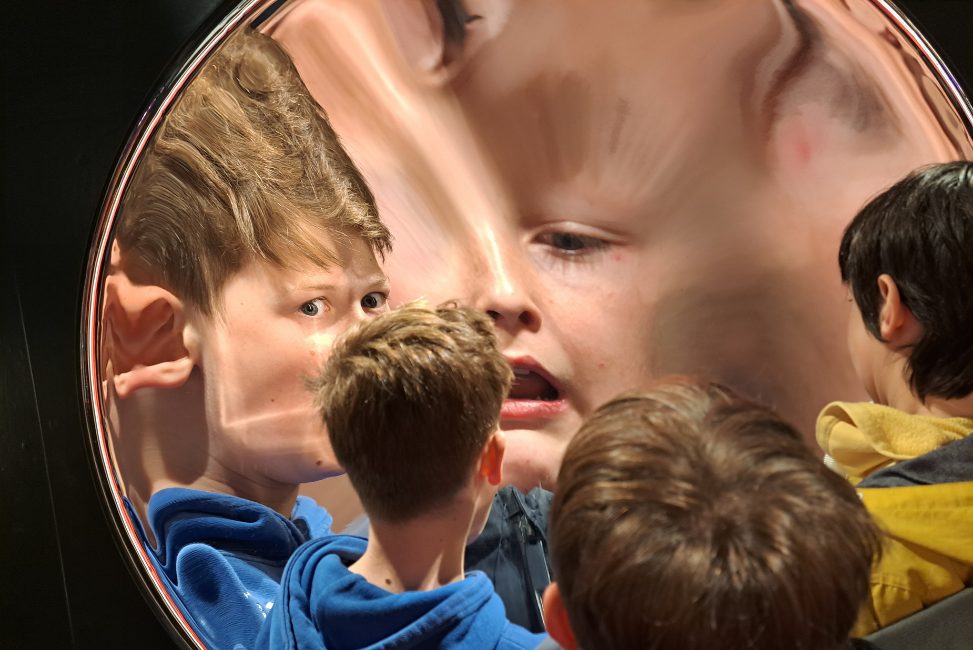Taking the theory into reality: Camera Obscura
November 13 2023

Before each experiment the pupils must write down a hypothesis of what they expect to happen, this is then included in their write up of the experiment in their Main Lesson book the next day. This is a very different structure from the traditional writing in a Main Lesson book, as it follows the structure of scientific research, albeit on a reduced scale, which prepares them for reading research papers and Upper School science subject lessons. It also develops their skills of analytically thinking. “How does this work?” So by the time they reached the incredible, interactive exhibits in Camera Obscura, the Class were more than capable of understanding reflection and hypothesising how these tricks work.
The Class were incredibly enthusiastic about playing with every exhibit. They squealed with joy, collaborated on the best way to get a good outcome and analysed the science. Eventually they reached the very top of the five-storey building and were introduced to the “dark room” by our guide. We were lucky the clouds had lifted.
Several of the Class had played with pinhole cameras before and they had heard the theory in class but applying that to such a scale was a difficult concept. Seeing the whole of Edinburgh City Centre without their definition of a camera was mind boggling, they expected elaborate tales of many lenses working together with mirrors and electricity, not the simple reality of sunlight, one mirror and a dark room.
Taking the theory into reality really was essential to grasping what this 11th Century invention (our Edinburgh one was built in 1835) was capable of.
